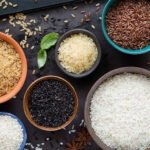In our pursuit of optimal health, it’s essential to address not only dietary concerns but also environmental factors that impact well-being. Recent joint estimates from the World Health Organization (WHO) and the International Labour Organization (ILO) shed light on a pressing issue: the substantial risk outdoor workers face in developing non-melanoma skin cancer due to prolonged sun exposure.
The Alarming Statistics
According to the research, nearly 1 in 3 deaths from non-melanoma skin cancer can be attributed to working under the sun. This sobering fact underscores the need for immediate and comprehensive action to protect those who labor outdoors. The study reveals that in 2019 alone, almost 19,000 people across 183 countries lost their lives to this preventable occupational hazard.
Occupational Exposure: A Global Concern
Occupational exposure to solar ultraviolet radiation now stands as the work-related risk factor with the third-highest attributable burden of cancer deaths globally. The numbers are staggering, with skin cancer deaths doubling between 2000 and 2019, reaching 18,960 deaths in the latter year.
Call to Action: Prevention is Paramount
Dr. Tedros Adhanom Ghebreyesus, WHO Director-General, underscores the urgency of addressing this issue, emphasizing that unprotected exposure to solar ultraviolet radiation is a major cause of occupational skin cancer. However, he also highlights that effective solutions exist, and with concerted efforts, we can protect workers from the sun’s harmful rays.
A Fundamental Right at Work
Gilbert F. Houngbo, ILO Director-General, emphasizes the importance of a safe and healthy working environment as a fundamental right. Deaths caused by unprotected sun exposure during work are largely preventable through cost-effective measures. Governments, employers, and workers must collaborate to implement policies and regulations that safeguard outdoor workers.
Protective Measures: Beyond Sunscreen
Preventive measures go beyond sunscreen. Governments should establish, implement, and enforce policies that provide shade, adjust working hours away from solar noon, offer education and training, and equip workers with protective clothing. These measures are crucial, especially when the ultraviolet index indicates elevated risk.
The SunSmart Global UV App: A Tool for Protection
In response to this concern, WHO, ILO, the World Meteorological Organization, and the United Nations Environment Programme have recently launched the SunSmart Global UV App. This tool empowers outdoor workers to estimate their exposure to solar ultraviolet radiation, aiding them in taking proactive steps to protect their health.
Raising Awareness and Early Detection
Beyond policy implementation, raising awareness among workers about the risks associated with occupational exposure to solar ultraviolet radiation is essential. Additionally, providing services and programs for the early detection of skin cancer can significantly reduce the impact of this occupational hazard.
High UV index in Bangalore and Karnataka

In all, 27 of 31 districts of Karnataka, including Bengaluru, are showing UV (ultraviolet) Index readings of 12, which is considered “extreme”. The UV Index for Dharwad, Kolar, Koppal and Raichur are 13 and for Yadagiri it is 12.5, according to a report in The New Indian Express.
The relatively long-wavelength UVA accounts for approximately 95% of the UV radiation reaching the Earth’s surface. It can penetrate into the deeper layers of the skin and is responsible for the immediate tanning effect. Furthermore, it also contributes to skin ageing and wrinkling. For a long time it was thought that UVA could not cause any lasting damage. Recent studies strongly suggest that it may also enhance the development of skin cancers, the WHO says.
On the timing and damages it can cause, Dr Abhiram R, Consultant Dermatologist, Vasavi Hospital, told the newspaper, “UV-A and UV-B peak between 11.30 am and 1.30 pm and it is the highest between March and October. Short-term damage to the skin can be sunburn and suntan. This can later change to pigmentation. Long-term causes can be photo-ageing and photo-carcinogen, leading to risks of skin cancer.”
For physical protection, people can use umbrellas, eyeshades, brim hats etc, sunscreens with SPF 30 to 50. One should apply sunscreen 20-30 minutes before going into the sun, and keep applying it once every two to three hours, he said.
Connecting Health and Environment
As advocates for holistic health, we at Dr. Sumaiya NutriCare Clinic recognize the interconnectedness of environmental factors with overall well-being. Our commitment extends beyond nutritional guidance to championing a comprehensive approach to health that addresses both internal and external influences.
Embark on a health transformation with Dr. Sumaiya’s NutriCare Clinic. Explore personalized diet plans rooted in expert nutrition, ensuring a holistic approach to well-being—shielding both your body and soul from harmful exposures.

Source:


